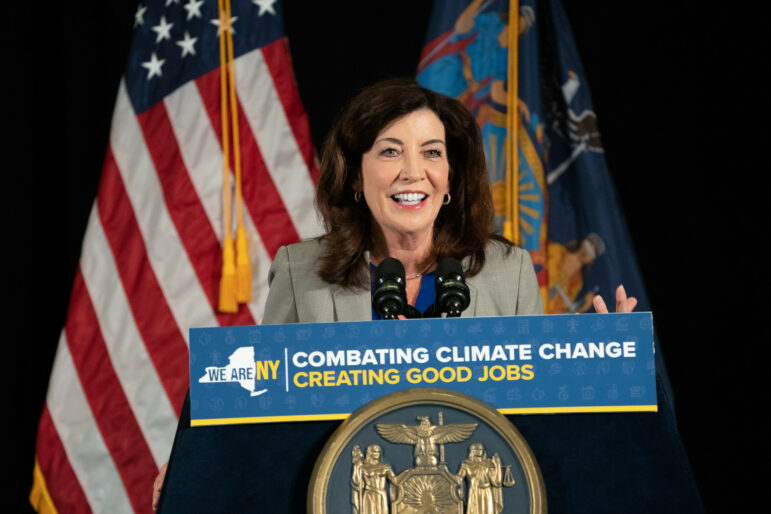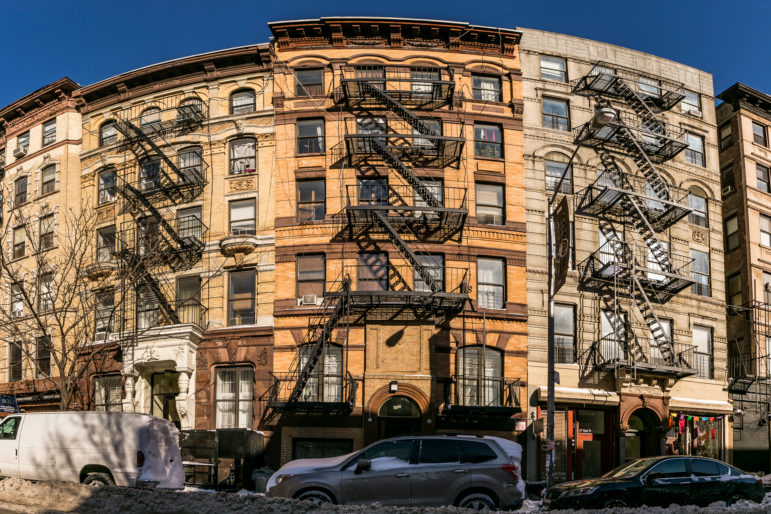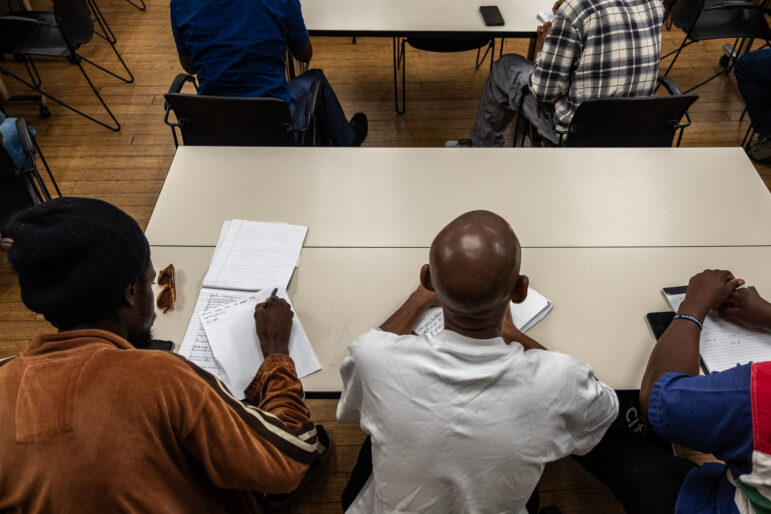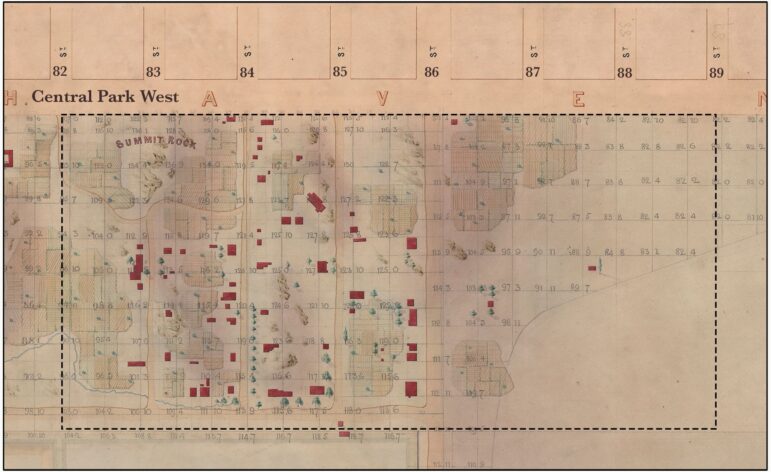
EDC
An image from the city's action plan. EDC has defended itself against criticism that it didn't do enough outreach to the Spanish-speaking community.
It’s been two years since Inwood Councilmember Ydanis Rodriguez and the Economic Development Corporation (EDC) initiated the Inwood NYC Planning Initiative—one of about a dozen rezoning studies launched as part of the mayor’s plan to build or preserve 200,000 units of affordable housing.
There have been many media reports commenting on the slow pace, but with the release of the Inwood NYC 2017 Action Plan on Thursday, Rodriguez and EDC are hoping to share the aggregate work of those two years and demonstrate how the plan has been shaped by residents’ feedback.
“This marks a new phase that will guide our conversations with stakeholders for the coming months so we can finalize a plan that brings our community to a new level,” said Rodriguez in a press release, reiterating his vision to spur the development of affordable housing, create a technology and healthcare hub and use education to connect residents to quality jobs. “At the end of this process, Inwood will continue to thrive as a home for longtime residents and a destination for all who choose to live here.”
The Action Plan can be viewed on EDC’s website in both English and Spanish, and print copies will be distributed to multiple locations, including the local library, Rodriguez’s office, and area nonprofits, among other sites.
Much of what’s in the action plan, however, may not be news to involved stakeholders. Key questions, such as the exact zoning proposal for the areas west of Tenth Avenue, are yet to be answered, and key concerns, such as whether a rezoning could exacerbate the pressures on Inwood’s massive rent-stabilized housing stock, are still under debate.
The press conference did, however, provide an opportunity to hear EDC’s latest thinking on a number of Inwood’s concerns.
Heralding a comprehensive plan
The goals of the initiative, according to the Action Plan, include addressing the area’s increasing unaffordability, providing new job and educational opportunities for residents, creating access to the Harlem River waterfront by creating a more continuous neighborhood, investing in local infrastructure and—a more recently fleshed out objective—countering private development that interferes with existing community character.
The Action Plan stresses the variety of investments—$42 million and likely more to come—to be made as part of the plan, which involves a total of eight agencies. This includes a $1.14 million grant to fund commercial revitalization projects, $900,000 for a Workforce1 Center that opened last September, $30 million for improvements to Washington Heights’ Highbridge Park, and $10 million for the a redevelopment of the local library that incorporates rent-restricted housing. Another $15 million has been committed for standard renovations in parks. The city also intends to create an Inwood-wide drainage plan to determine the need for new sewer infrastructure.
To protect existing tenants, the city is ramping up code enforcement and outreach to landlords to renew or bring them into affordability agreements, among other initiatives. The Tenant Support Unit is reaching out to tenants to connect them with legal support, and has knocked on tens of thousands of doors just since February. Legal Services NYC also opened a new office in the neighborhood last November.
According to the plan, EDC engaged over 2,300 stakeholders. Some local groups have expressed concern that the city has failed to reach out to the neighborhoods’ Spanish speaking populations. To this, EDC counters that their recent “Tele-town hall” included 1,000 participants and was bilingual, that meetings and materials are all bilingual, that they are continuing their small group engagement and some of the people reached are Spanish-speaking, and that a Spanish version of the website will be launched soon.
Questions remain about affordability, displacement
Many residents’ principal objection to a rezoning is that it will exacerbate displacement by bringing an influx of market-rate housing to the neighborhood as well as attention from speculators.
A new map published last week by Propublica found that several neighborhoods targeted for a rezoning, including Inwood’s ZIP code, have some of the highest numbers of rent-stabilized apartments with preferential rents, where a landlord rents an apartment at less than the legal amount, allowing them to achieve a large rent increase at any time.
As wrote Christopher Walter of the Association of Neighborhood and Housing Development in a blog later on Thursday, “As land values and rents increase following the rezoning, there’s nothing to stop a landlord from raising the rent to a level that might force a tenant out.”
EDC, however, argues that there’s no correlation between rezoning and displacement, that neighborhoods are gentrifying without rezonings, and that it’s important to upzone to ensure the creation of affordable housing and, in general, to boost the city’s total housing supply.
EDC also notes that Inwood’s median income is $41,687, and housing created by mandatory inclusionary housing does sometimes serve that income level (MIH allows developers to pick from several different affordability options, but one of those options is to set aside 20 percent of units for families making 40 percent AMI, or $34,360 for a family of three.)
About 28 percent of Inwood’s population makes less than $24,500 for a family of three.
The city also says that while the market is heating up—which generally signals that developers want to build purely market-rate apartments—EDC is hopeful that for now some private developers will accept subsidies to create additional affordable housing.
The Action Plan also highlights HPD’s effort to redevelop the Inwood library with 100 percent rent-restricted housing. Many residents would rather the city find another public site, but EDC says that while the city is actively looking, it has so far not identified any other viable public parcels.
Zoning details still forthcoming
As residents have known for a year, the city plans to change the mostly-manufacturing zoning east of 10th Avenue to medium- to high-density residential and commercial districts (the exact zoning designations can be viewed here). But, as indicated in the Action Plan, the zoning plans for the areas west of 10th Avenue are still under discussion. For that, residents will have to wait until a meeting on Thursday, July 13, at 7 p.m. at the community board’s offices at 530 West 166th Street.
As reported by City Limits in May, after advocacy from residents, Rodriguez and Borough President Gale Brewer, EDC agreed to study a “contextual” rezoning, or one that preserves the character of the neighborhood, for the areas west of 10th Avenue. EDC is also considering an upzoning of some corridors west of 10th avenue to trigger the mandatory inclusionary housing policy—a step that residents at a recent community meeting argued they strongly oppose. Nevertheless, the Action Plan does still mention the need to trigger mandatory inclusionary housing on those corridors.
It also seems unlikely that EDC will answer residents’ calls to extend the contextual rezoning area south of Dyckman Street. EDC says that extending the contextual rezoning south would further slow down the process because the borders of their Inwood study have always been defined with Dyckman Street as the southernmost border.
Brewer offered congratulations to EDC for the release of the Action Plan and commended the administration for “responding to our concerns that a more comprehensive planning framework and more community engagement were needed.”
The city’s goal is to produce a Draft Scope of Work with its full zoning recommendations by early fall, and to enter the public review process by end of this year.









5 thoughts on “Inwood Sees City’s Plan Take Shape, Awaits Details on Zoning Proposal”
While Inwood definitely needs a plan to guide future growth and development, the “Action Plan” released yesterday is not that plan. While the plan presents some worthwhile actions especially regarding parks and tenant rights, it feels more like a steamroller in sheep’s clothing than a guide for a healthy future for Inwood. I attended most of the public meetings for the rezoning as well as for the library–and the plan as released does not accurately reflect the overall needs of the community that were expressed. We have all had to quickly become experts in zoning and city planning, and even a novice can see that the zoning that is most protective of what we already have–a walkable, lively, mixed-used small town at the northern tip of a huge metropolis–is R7A, not the sneaky upzoning proposed in the plan. R7A would allow for affordable housing to be built without tearing down the beautiful and affordable mid-rise buildings we now have and replacing them with soulless highrises that are only 30% affordable, if that. Inwood is already a gem, and hacking away at it via inappropriate rezoning will not increase its lustre–it will destroy it.
One wonders what backroom deal Columbia and NYP cut with the city to exclude their lands from the contextual rezoning area…
EDC defends its plan by pointing out that the deepest income category for affordable housing under mandatory inclusionary zoning has a ceiling lower than the median income for Inwood. But that is not the most relevant comparison. Many, but not all, Inwood residents are homeowners or have apartments they can afford. Those who don’t are of course concentrated in the lower half of the income distribution, with incomes below the median. In fact, about half of Inwood residents pay unaffordable rents (more than 30 percent of income), and more than half of those have incomes below “30 percent of Area Median Income” or about $25,000 a year — well out of range of the mandatory inclusionary benefits. The de Blasio administration deserves credit for increasing the number of apartments targeted to this range in its housing production plan, but the number is still far too low to mitigate the effect of promoting market development in neighborhoods like Inwood. There is a case to be made that the benefits of increasing the overall housing stock are worth the cost in terms of decreased affordability when neighborhoods are redeveloped, but if that’s true, then it’s worth having the city absorb those costs through deeply targeted affordability measures, instead of letting the burden fall on low-income people who are least able to absorb it. The city should commit to significantly increase affordability for the lowest incomes, and should commit to locating this deeply affordable housing in rezoned and other gentrifying neighborhoods. If all a low- or mixed-income neighborhood gets are the benefits required under mandatory inclusionary, that is always going to be a bad deal for the low-income part of the community.
Why is the area of Inwood below Dykeman St. not included in the Inwood map? This area is not in the elevated part of Manhattan called Washington Heights (hence the descriptive name ‘Heights’.) This lower part of Inwood includes the site at Sherman Ave and Broadway where there were recent demonstrations against a plan to build a high rise apartment building. This area, which extends to the intersection of Broadway-Nagle-Hillside-Bennett, is geographically part of Inwood: it is not in the ‘Heights’.
Pingback: Before Push for Rezoning’s Approval, Metropolis Affords Unique Dinky print on Investments for Inwood – Pin by Vurdpress